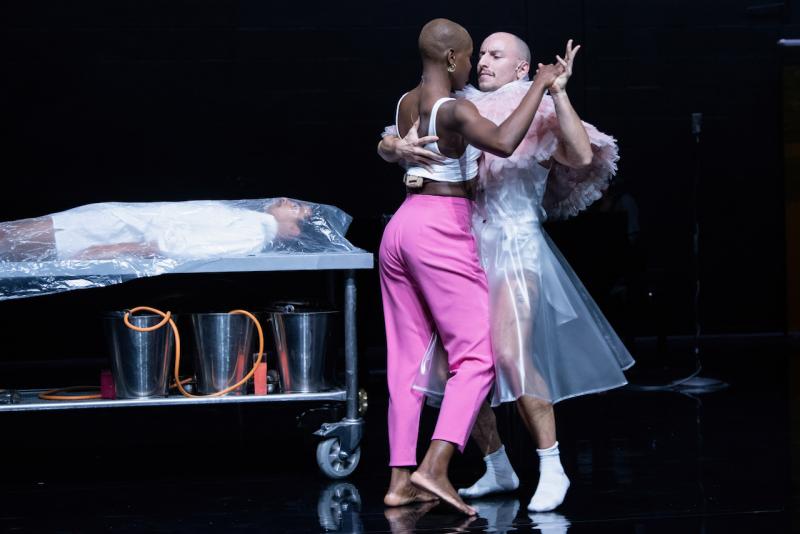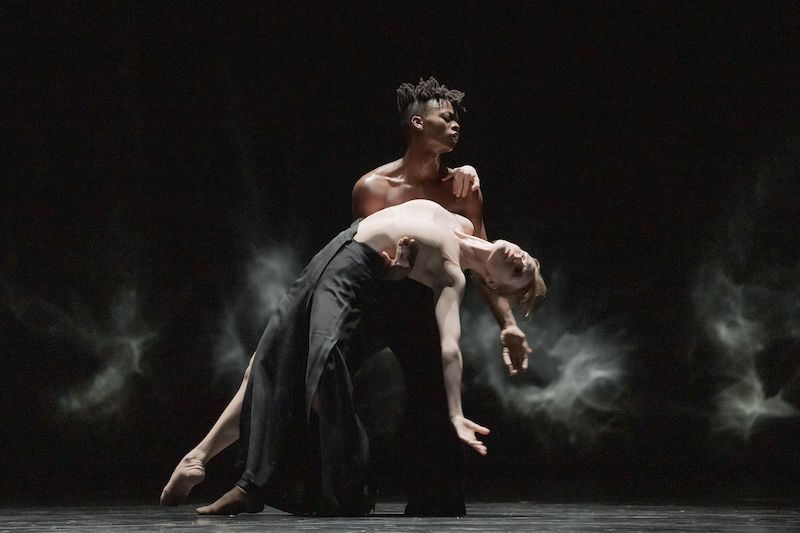In an ideal world an end-of-year roundup would applaud only new ventures – fresh productions that you may curse for having missed but whose success would almost certainly ensure a second run.
The past 12 months in dance has offered few of these. Instead, it was a year of fine revivals. At a time of tightened belts, tightened as never before, it made sense to programme the tried and tested. There were some novelties, of course, but it was the best of the seen-befores that made the bigger splash. The Royal Ballet, flush with its new status as the dominant company at Covent Garden after 80 years of playing second fiddle to opera, has gone from strength to strength, its dancing and production values world-class. Yet its single big creative push – Maddaddam, Wayne MacGregor’s response to a triptych of novels by Margaret Atwood – had at best a mixed reception. It was the second revival of Liam Scarlett’s magisterial production of Swan Lake, and the 50th anniversary return of Kenneth MacMillan’s Manon (pictured above) – its drama significantly tightened – that will have turned merely curious first-time ballet-goers into ballet fans and made plain why we must now get used to referring to “the RBO” – The Royal Ballet and Opera, rather than the other way around. Audiences have voted with their feet and wallets.
The Royal Ballet, flush with its new status as the dominant company at Covent Garden after 80 years of playing second fiddle to opera, has gone from strength to strength, its dancing and production values world-class. Yet its single big creative push – Maddaddam, Wayne MacGregor’s response to a triptych of novels by Margaret Atwood – had at best a mixed reception. It was the second revival of Liam Scarlett’s magisterial production of Swan Lake, and the 50th anniversary return of Kenneth MacMillan’s Manon (pictured above) – its drama significantly tightened – that will have turned merely curious first-time ballet-goers into ballet fans and made plain why we must now get used to referring to “the RBO” – The Royal Ballet and Opera, rather than the other way around. Audiences have voted with their feet and wallets.
The Linbury Theatre, the RBO’s second house, was also busy with golden oldies. The Mad Hatter’s Tea Party, Kate Prince’s riotous hip hop take on the Wonderland characters, emerged from a 10-year retirement to delight a new generation. A live band and expert DJ-ing brought a sheen of sophistication to the energy, fun and surprising moments of pathos. The show's message, delivered with the lightest touch in a sung and spoken text, was that what the neurodiverse require is kindness, above all. As the Mad Hatter tells Alice: “You’re entirely bonkers… but all the best people are.” Another safe bet at the Linbury was Ruination, a multi-discipline show by Ben Duke and his company Lost Dog that was seriously high risk on its first time out in December 2022. Using a mix of text, wide-ranging live classical music and occasional outbreaks of contemporary dance, it retells the story of Medea, a serial killer who supposedly murdered her own children. Ruination opens in a morgue, presided over by Hades (pictured above, with Persephone), taking delivery of the first corpse of the evening. As Hades says, turning a quizzical eyebrow on the audience: “It's Christmas. Cinderella is playing in the theatre upstairs. But you chose this, right?” The revival is still running, but you’ll need to beg, steal or possibly murder to secure a ticket.
Another safe bet at the Linbury was Ruination, a multi-discipline show by Ben Duke and his company Lost Dog that was seriously high risk on its first time out in December 2022. Using a mix of text, wide-ranging live classical music and occasional outbreaks of contemporary dance, it retells the story of Medea, a serial killer who supposedly murdered her own children. Ruination opens in a morgue, presided over by Hades (pictured above, with Persephone), taking delivery of the first corpse of the evening. As Hades says, turning a quizzical eyebrow on the audience: “It's Christmas. Cinderella is playing in the theatre upstairs. But you chose this, right?” The revival is still running, but you’ll need to beg, steal or possibly murder to secure a ticket.
Likewise at Sadler's Wells, with a few major exceptions, the shows that have stuck in the mind have been re-runs. Fans of Pina Bausch landed a double treat, first from her signature work Nelken, the stage planted with 8000 pale pink silk carnations, then later in the year with her setting of Stravinsky's Rite of Spring. What made the latter special (again) was the blistering performance by the pan-African dancers of École des Sables, based in Senegal but apparently on an endless world tour, taking in Sadler's Wells for the second time in two years. The Wells also clocked up its own weight in likes for Matthew Bourne's Swan Lake at 30, a run that continues throughout January, playing to an audience many of whose parents hadn't yet met when it premiered. In that time, Bourne's bold and brilliant reinvention (pictured above) has become a classic in itself. The other revival I could watch on a loop and still be left wanting more was Giselle, in the old production by Mary Skeaping, the jewel in the repertory of English National Ballet. For its period delicacy, crystalline storytelling and gothic terror, it stands unbeaten. ENB ran it last January, and it's about to come round again. The Coliseum, with its democratic sightlines and excellent acoustics, is the perfect venue for it.
The Wells also clocked up its own weight in likes for Matthew Bourne's Swan Lake at 30, a run that continues throughout January, playing to an audience many of whose parents hadn't yet met when it premiered. In that time, Bourne's bold and brilliant reinvention (pictured above) has become a classic in itself. The other revival I could watch on a loop and still be left wanting more was Giselle, in the old production by Mary Skeaping, the jewel in the repertory of English National Ballet. For its period delicacy, crystalline storytelling and gothic terror, it stands unbeaten. ENB ran it last January, and it's about to come round again. The Coliseum, with its democratic sightlines and excellent acoustics, is the perfect venue for it.
What, then, were the new points of dance interest in 2024? The rise of gala programming is worth noting – curated evenings of multiple works, some old, some new, performed by dancers invited from all over the place. The Ballet Nights brand, channelling a cabaret vibe with its DJ-wearing compere, seemed to hit some kind of personal best when it sold out the Cadogan Hall with a one-night-only mixed bill. Legacy, the initiative of newly appointed Royal Ballet principal dancer Joseph Sissens, followed a similar line, inviting 19 friends and colleagues from other companies to perform in a dozen short works. In this instance, the focus was on black and brown dancers and creators and it was a zinger.  In 35 years of dance watching I’ve seen no young dancer more assured and beautiful than Emile Gooding (pictured above) almost literally taking wing in Christopher Wheeldon's In the Golden Hour. And what a coup to land a world premiere by fast-rising choreographic star Arielle Smith! Pass It On, set to four numbers by mouth-magician Bobby McFerrin was full of hang-loose rhythmic grooves that made you want to shout for joy. This all needs to be seen again more widely.
In 35 years of dance watching I’ve seen no young dancer more assured and beautiful than Emile Gooding (pictured above) almost literally taking wing in Christopher Wheeldon's In the Golden Hour. And what a coup to land a world premiere by fast-rising choreographic star Arielle Smith! Pass It On, set to four numbers by mouth-magician Bobby McFerrin was full of hang-loose rhythmic grooves that made you want to shout for joy. This all needs to be seen again more widely.
At the other end of the scale, the Canadian dance maker Crystal Pite must be well on the way to global saturation with a queue of major dance companies wanting to commission her. This year's chance of seeing recent work by her came as part of a triple bill by Canadian National Ballet. Pite thinks big, and Angels' Atlas did not disappoint with its His Dark Materials theme of celestial forces casting pity on mankind's general folly. At least, that was my interpretation of the extraordinary scenes (one of them pictured top) canopied by ever-changing cascades of what could have been smoke or steam. The effect was heightened by a soundtrack that included seraphic choral church music and rumbles suggesting falling masonry. In a programme note Pite wrote of her intention to evoke in this piece "a fierce pulse of life". It was certainly fierce, but what made Angels' Atlas almost overwhelming was its sense of pity and grief. Among the myriad synchronised gestures that gave texture to the crowd scenes (40-plus bodies on view, moving as one), were suggestions of the loading of automatic rifles, as well as profitable human toil. Choreographers rarely strive to suggest great and ineffable things, and in my experience Pite is alone in her achievement.
In a programme note Pite wrote of her intention to evoke in this piece "a fierce pulse of life". It was certainly fierce, but what made Angels' Atlas almost overwhelming was its sense of pity and grief. Among the myriad synchronised gestures that gave texture to the crowd scenes (40-plus bodies on view, moving as one), were suggestions of the loading of automatic rifles, as well as profitable human toil. Choreographers rarely strive to suggest great and ineffable things, and in my experience Pite is alone in her achievement.














Add comment